A messy desk not only looks bad but also negatively impacts productivity and leads to undue stress. Wires bunching up underfoot or sprawling all over your workspace are more than just an aesthetic problem. They pose a threat that could disrupt workflow and damage critical equipment. This article will serve as a comprehensive guide on the incredibly useful skill that is cable management, aimed to assist you in transforming your messy desk into an orderly workspace. Everything, from basic principles of cable organization to more sophisticated cable management tools and techniques will be covered in order to provide you with ways to cull cable chaos once and for all. If you are setting up a home office, improving your gaming station, or wanting a tidier work area, this guide will serve everyone trying to achieve a functional setup.
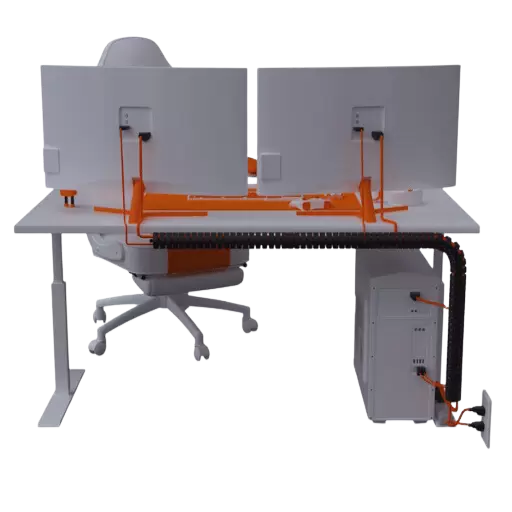
Proper management of cables is essential in promoting a functional workspace that is safe and clean. Effective cable management will eliminate clutter which can improve focus as well as productivity because it is visually appealing. In addition to improving the safety of the workstation, properly routed cables reduce the chances of tripping over cables and damaging equipment. Also, having organized cables minimizes strain on device connections which helps prolong the life of the devices. All in all, effective cable management helps achieve an organized and safe workspace, especially with regard to the products we sell.
Cable clutter can drastically affect productivity in both primary and secondary ways. Various studies demonstrate that clutter captures attention in the head which diminishes focus and enhances load on the brain. A workspace with messy wires and cables can contribute to distractions which negatively alter the ability to focus on undertakings. Research in environmental psychology shows that visually simple and organized workspaces aid in enhanced cognitive functioning and satisfaction from the job.
In addition, disorganized cables can lead to less effective use of time. For instance, workers can waste precious time attempting to disconnect cords, trying to find misplaced cables, or solving device power issues due to poor wiring. This results in a slowdown in processes and in some cases, heated tempers.
Looking from safety perspective, disorganized cables increase the chances of electric hazards or equipment damage which can result in disruption of operations and might need long hours of repairing. There is a report by the National Fire Protection Association (NFPA) that shows badly managed wiring is also a source of safety incidents in workplaces.
All these bits and pieces add up over time which goes on to show how critical good cable management is. Efficient solutions to organizing cables take little time to implement and improve operation performance as well as the health and productivity level of the working environment.
Effective management of cables can enhance the appearance and professionalism of a workspace. Moreover, neatly arranged cables create an orderly impression in offices and industrial setups, which is important for clients or visitors. Employees are likely to experience improved morale as well in well-ordered spaces as these areas are less stressful and enhance focus. Distracting, disorganized, and tangled wiring is associated with clutter, which can restrict an individual’s ability to focus, and studies claim that addressing that can boost productivity by 15%.
For instance, cable trays and raceways under desk systems get rid of distracting wire mess strewn on desks or floors while still allowing for easy access by employees. Concealed and neatly structured cables can assist in maintaining the modern look of technological devices. This improves the aesthetics of the workspace by making it minimalistic and clean. Overall, this underscores the importance of cable management by highlighting professionalism and detail, thus balancing design standards with functionality.
The appropriate management of cable scope is necessary to increase safety in the workplace and compliance with occupational safety policies. Poorly managed cables can lead to trips and falls, which, according to the National Safety Council (NSC), account for almost one-third of all workplace injuries. With proper cable management and walking space upkeep, businesses can decrease the occurrence of some of these accidents.
Overheated cables can cause electrical fires if they are left unmanaged. OSHA and other organizations have set fire safety standards that strongly suggest untangled and underloaded cables to avoid the possibility of these fires. Busing up these risks can also be achieved by using structured solutions such as cable trays and heat protective wraps. These measures ensure the safety of employees and equipment while minimizing the risk of unrestricted access to overheating cables.
Cables that are well managed enable more preventative maintenance to be conducted as there is less downtime, which decreases the time for being exposed to equipment that is not functional, which can be dangerous for both employees and employers. Implementation of management strategies increases the safety of the work environment while displaying their care for the well-being of the employees.
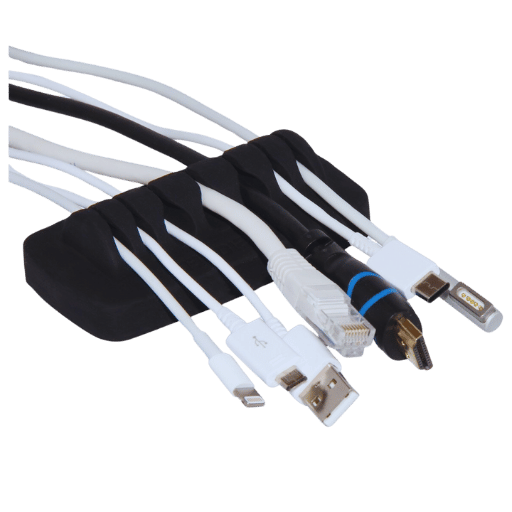
For budget-strapped users, several reliable cable management products provide functionality without breaking the bank. For example, cable ties are some of the cheapest and most versatile tools. A pack of 100 can be purchased for as low as $5. They not only bundle and secure cables but also come in reusable varieties for added ease of use.
Cable clips and adhesive mounts are another great option, running between $7 and $15 per pack. These small devices attach to flat surfaces and serve to route cables along walls, desks, or any other areas that require an orderly appearance. For under-desk management, neoprene or fabric sleeves offer a modest solution for $10 to $20. These sleeves group cables together and make it aesthetically pleasing as well as prevent tangling.
Furthermore, cable management boxes that are designed to hide power strips and cords are available for $15 to $30. These reduce clutter and the chance of tripping over wires. They are particularly useful in a home or office setting where the presence of cables is a distraction. Together, these devices provide a means of cable management that is efficient, cost-effective, and safe.
Middle-segment cable organizers and sleeves are durable while being fairly priced. These include braided cable sleeve, adjustable cable wraps as well as multipurpose holders. The braided sleeves, which range from $20 to $40, are flexible and protective which makes them ideal for use in areas with multiple cords. Adjustable wraps, which can be purchased for $15 to $25, allow for disorganization due to their ease of reconfiguration in setups. The multipurpose cable holders that range from $10 to $20 provide robust mounting options that keep the cables fixed in position. These solutions are reliable and adaptable to personal as well as professional settings.
The finest professional-grade cable management solutions are built with exceptional organization, strength, and scalability in mind. Robust products such as modular cable trays and raceways offer reliable permanent installation options that ensure cables are safely routed and concealed. These systems are most often used in offices or data centers because they are constructed from heavy-duty materials like steel and aluminum. They are especially economical when purchased from an office furniture vendor. Premium grade options often exceed $200, starting around $50, and vary in size and features, making them a professional investment for long-term use. Integrated labeling options on cable management racks also further simplify maintenance and identification, increasing efficiency.
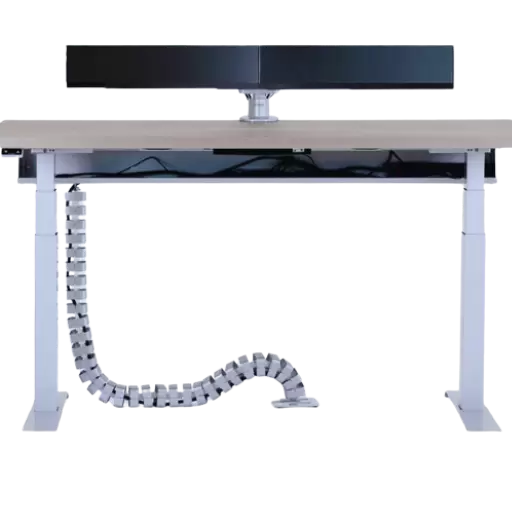
To evaluate your cable management strategy, start by determining how many cables you use on a daily basis and their respective type. Remember the frequency with which cables require repositioning or replacements, as this will influence whether a flexible or fixed solution is more appropriate. Analyze the space above or under the desk’s bottom surface to confirm compatibility with the chosen system. Moreover, focus on systems that reduce tangling while improving accessibility, considering monitors and charging stations that need to be plugged in constantly. Choosing a solution that meets the arrangement and behavioral patterns of your workspace will give you the most efficient and tidy results.
Drawer Style Cable Organizers
Organizers that are implemented in drawers can effectively store excess cables. Enclosed dividers or compartments are usually provided to allow users to store multiple cables while preventing dust collection or damage. These types of organizers work best in stationary setups and help to reduce visual overload.
Sleeves and tubing
Cable sleeves and tubing work as flexible enclosures that bundle multiple cables within a single casing. They are useful for preventing the tangling of cables that run across desks and floors, effectively helping with appearance. They can be installed with ease for all sizes of cables.
Adhesive Cable Clips
Adhesive clips are small clip-like tools affixed individually on surfaces like walls or desks for cables requiring less mobility. They minimize the movement of the plastic tubes and keep frequently used cables easily accessible. Even though the clips are very simple, they still carry lightweight cables.
Under Desk Cable Trays
The trays are mounted underneath desks, thus providing secure storage space for long or unused cables. Under desk trays are essential for professional workspaces because they help to free up surface space as well as hide cluttered cables. These trays are strong and durable for heavier cable loads as well as power strips.
Like other cable management options, under-desk cable trays, adhesive clips, and cable sleeves stand compatible with standing desks and adjustable workstations. These attachable solutions such as clips and sleeves function without leaving under-desk cables dangling at disorganized positions during height changes. While selecting cable management systems, choose robust ones meant for dynamic environments to prevent straining cables as well.
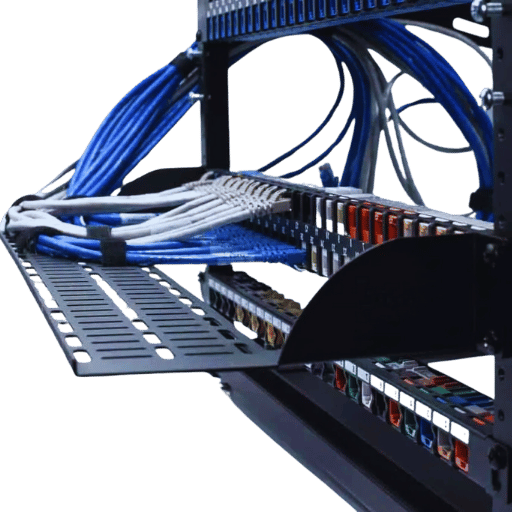
For the organization of cables at adjustable workstations, Velcro straps and cable ties are simplistic but functional tools. While cable ties are useful for permanently bundling wires, Velcro straps can be easily modified. For maximum effectiveness, use cable ties for infrequently adjusted cables and Velcro straps for cords that may need readjusting. These options reduce clutter and tangling while keeping the workspace clean, tidy, and efficient.
To enable the use of cable sleeves and raceways, I first classify the cables according to their destination or use. I then ensure that each group of cables is neatly organized by bundling them with cable sleeves. For aesthetic purposes, as well as safety to reduce tripping risks, I install raceways to conceal the cables when routing along the walls or under desks. This greatly improves the workspace professionally and functionally.
For places where drilling or permanent fixtures are not allowed, adhesive cable clips and mounts work as great tools for cable management. These clips and mounts can be attached to walls and desks which prevent the cables from tangling while ensuring they are easily accessible. To use them, ensure the mounting surface is clean first for proper adhesion. After cleaning, place the clips or mounts in the desired area to secure the cables, press down, and guide the cables through. This method is great as it creates an organized setup while ensuring the cables are undamaged and accessible.
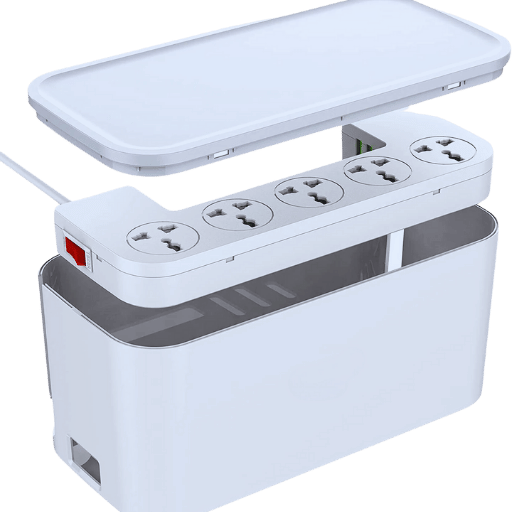
Choosing the appropriate size cable management box requires understanding the dimensions and volume of the items, like power strips, adapters, and extra cable lengths, that you need to organize. Start with the power strip, measuring its length, width, and height. Make sure the box accommodates the devices and the plugs connected to them. Many models range from small compact boxes (around a foot long) that are useful for smaller setups, to large units (around 16-17 inches long) designed for setups requiring multiple devices with higher volumes of cable.
Then, check the internal depth of the box as it relates to bulkier adapters which can cause overheating and overcrowding. Some models also include vent slots, which allow for more airflow and serve an important function of preventing overheating when several power adapters are in use. Other features like cable entry/exit points for versatile cable routing should also be kept in mind. Doing so will allow for a better evaluation of the cable management solution and make it safer and more efficient for use in workspaces and homes.
The proper placement of cables and the accessories used are critical to achieving effective cord organization in a cable management box. Group cords by their function or the device to which they are connected to minimize tangling and improve accessibility. For example, placing power cords in a different bundle than data cords assists in decreasing electromagnetic interference and eases troubleshooting. Strap each cord group with Velcro straps, cable ties, or silicone bands for better organization.
Use partitions like built dividers or slots inside the box for further sorting. Research indicates that cables that are separated have a better chance of cooling as much as 30% more, which can enhance the lifetime of the connected devices. Besides, make sure cables are reasonably sized; long cords should be coiled and taped to avoid clutter. Some modern cable management boxes come with USB charging ports or surge-protected power strips which aid in centralizing power control.
Label cords at both ends so that their connections are easy to track. This step greatly minimizes the effort spent locating the cables for maintenance or making equipment changes, making the whole cable management easier. Adopting these practices will enhance the durability, safety, and appearance of the setup.
First, find a box that compliments the design and size of your workspace in order to use a cable management box in your desk setup. To decide if a compact or large box is best for your desk, you will need to measure its dimensions as well as how many cables need to be organized. For example, slim, low-profile boxes may be more helpful for small desks, while larger setups may require more compartmentalized boxes with greater capacities.
When you are placing the box, ensure that it is easily accessible, but still keeps the workspace looking tidy. To reduce the amount of visible cables, place the box by power outlets or under the desk. Research has shown that a clean and organized desk limits distraction and increases focus by close to 60% which is why considering placing the box with other desk accessories such as file holders or monitor risers is a good idea.
Moreover, contemporary ergonomic configurations tend to focus on flexibility as well. Make sure the box does not block any adjustable features such as a sit-stand desk or flexible monitor arms. The rubberized cable ports prevent damage from overexposure to motion, further increasing longevity. As a final detail, use the cable management box along with clips or trays that contain the loose cables extending outside the box to give a clean and professional look.
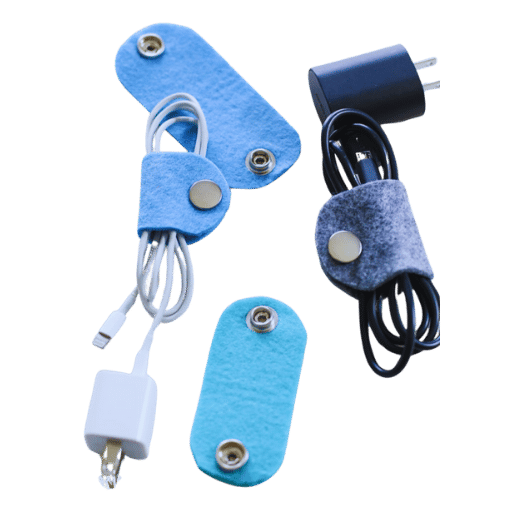
Unlike professional spooling solutions, household items can easily be adapted for cable management while contrubuting to a greener environment and saving money. For instance, a roll of toilet paper can be utilized as a single coil holder. Gather the cables and place them in the roll after coiling them neatly. Subsequently, the rolls can individually be labeled with markers or stickers. Correspondingly, binder clips can be affixed along the edge of the desk for easy access to charging cables or USB connections preventing them from hanging onto the floor, so they don’t get lost.
Another very useful example is a shoebox, which can be converted into a DIY cable clutter box. By simply cutting small circles in the sides of the box, the cables can now be plugged into the box without being fully inside it, so long as the other end is inside the box. With additional length of the cables conveniently stored in the box. To make this more aesthetically pleasing, you can cover the box with decorative contact paper or paint that goes well with the workspace. Furthermore, clips that come with bread bags can be used for labeling cables by attaching them to cords that correspond to the devices.
Effective cable management using such makeshift solutions is proven to enhance workspace organization and subsequently improve efficiency. In addition, these practices help lessen the consumption of commercially manufactured organizers and encourage the utilization of used materials, thus promoting sustainability. With these innovative techniques, the functionality and beauty of space can be maximized at the same time.
Custom cable management optimizes physical space and improves safety and productivity in computer-styled environments. Research shows that unorganized cables can decrease productivity by 20%, and cluttered workstations take time to untangle cords. Furthermore, organized systems in place greatly minimize the chances of tripping or accidentally disconnecting equipment.
In the professional realm, custom solutions such as Velcro cable ties, adhesive cable clips, or cable sleeves can be applied for organized control in high-density environments like tech hubs or server rooms. For domestic workspaces, using DIY solutions such as PVC pipe and binder clips are low-budget alternatives. A workspace ergonomics report highlights that neat environments improve focus and lower stress resulting in improved work productivity. In addition, creating waste cable management systems serves eco-friendly purposes while also helping to organize cluttered areas.
Having a system in place enhances the appearance of the workspace and contributes to new possibilities for improving workflow and equipment upkeep in the long run. Good wire management guarantees the equipment’s wires are properly controlled; they will not be tangled, broken, or hard to get to for maintenance which will reduce downtime while increasing reliability.
All of these tricks achieve a clean and effective cable arrangement while improving the aesthetics and functionality of the work area.
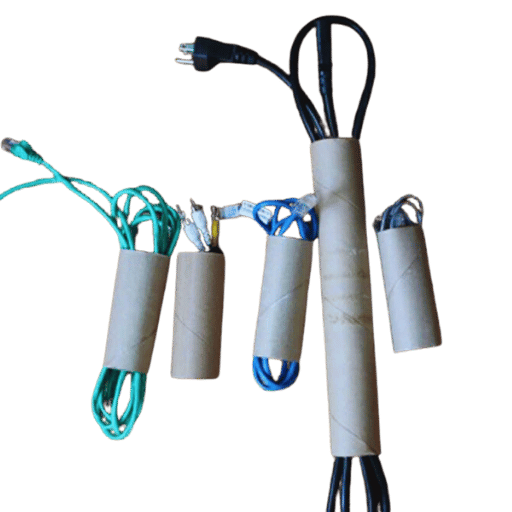
Conducting periodic examinations of all lines and cords ensures they are not damaged.
Review your cable configuration at predetermined intervals. Examine the setup for issues, and fix or mitigate any observed deteriorations such as fractures, loose connectors, or other safety hazards. Most home or office setups only need to be reviewed every quarter. s s s
Identify Cables for Quick Recognition
Cable markers or tags should be added for easier identification of each wire’s purpose. This is especially useful for multi-device setups that require quick modifications or troubleshooting to eliminate confusion.
Preventive dusting and cleaning
Dust buildup may obstruct ventilation to attached hardware, therefore, cleaning around cables is vital to maintaining a tidy work area and avoiding fire risks. For most wires, use a microfiber cloth to wipe down the wires and then vacuum the area around them.
Reduce the overcrowding of power strips
To avoid overloading a circuit due to too many electronics, space out devices among too many power strips and outlets, especially when wires and cables are included. Power strips that are too tight are not only an eyesore but also increase the chances of overheating and other negative electric outcomes.
Implement Modular Solutions
As technology evolves, modular cable management is becoming widely available, offering flexible and adjustable solutions for shifting organizational needs. Modular solutions enable users to change their cable management as more devices are incorporated into the system.
Formulate a Secondary Documentation Strategy
Draw up a basic sketch or construct a file that delineates your cable configuration, specifying which cables link to particular devices and power outlets. This file can be very helpful in saving time and effort during upgrades or component replacements.
These practices can ensure proper maintenance and efficiency for complex cable setups, minimizing risk and maximizing productivity in a workspace.
Upgrades to hardware and software are being implemented and integrated into technology at an increasingly swift pace. The need to not only upgrade but anticipate future changes and implement effective and organized cable management becomes ever so important. In recent reports, changes to global consumer electronics take place approximately every 2-3 years due to the launch of new devices and improvements in their features. This news not only affects the cable management tier list but helps us understand how to best address implementing these cables.
To stay ahead, consider strategies that look forward, for example using cable labels that are versatile enough to be updated or replaced. It has been shown that businesses that utilize extremely detailed labeling systems can decrease setup modification time by 30%. Also, invest in durable and long-lasting cables and connectors, USB-C and HDMI 2.1, that can stand modern standards. This will not only guarantee the compatibility of new devices but also reduce the frequency associated with the need to replace these devices.
Another great option for flexible configurations is Modular cable management trays or racks, for example, a desk cable tray. These modular designs allow for the addition and removal of devices, hence permitting greater freedom in altering configurations. New reports in the past years have shown that this system enhances the agility of the workspace and, in addition, enables more effortless adaption to new configurations.
Keeping an eye on device trends and manufacturers’ updates proactively will aid in crafting your cable management strategy. By implementing these techniques, you can ensure that your workspace is organized and ready for the future irrespective of the changes in technology that your workspace needs to accommodate.
A well-structured workspace greatly benefits from careful cable management. There are, however, many issues that can arise from improper maintenance or design of the system. Here is a list of cable management systems problems, their solutions, and relevant information to assist in troubleshooting:
Cables Becoming Overcrowded in Trays or Racks
Overcrowding of cable trays or racks can increase the chance of cables getting disintegrated, overheating, and even getting lost entirely. Research estimates that crowding a cable tray increases the chance of cable failure by 40%.
Solution: Perform load calculations of trays and racks to make sure there is no overcrowding based on cable type and size. In the case of increased modular unit tray overflows additional trays should be provided or modular systems should be expanded.
Cables Disorganized for an Extended period
The absence of routine management makes it easier for cables to get tangled and mislabeled. This makes troubleshooting a challenging feat. Surveys estimate that 62% of Information Technology professionals devote unnecessary hours just identifying mismanaged cables while performing routine maintenance.
Solution: Schedule periodic cable inspections and their reorganization. Attach rigid color labels or labels made out of heat shrink material to assist in faster identification of cables.
Damage Resulting from Cables
Ascertain that crimping, wear and tear or accidental cuts associated with installing or adjusting equipment is properly done. Homes with poorly installed cables may experience malfunctioning or intermittent connectivity issues. Research suggests that cable damage accounts for roughly 25% of network failures.
Solution: Protect cables in high-risk areas with cable sleeves, conduits, or braided wraps. In addition, ensure that adequate bend radius guidelines are adhered to during the installation process.
Excessive or Limited Cable Length
Cables that are either excessively long or too short inevitably create clutter and can place unnecessary strain on connectors. According to a report, a staggering 43% of people said that inappropriate cable length affects workspace productivity.
Solution: When setting up, be sure to plan out the cable lengths properly and use adjustable cable ties to tidy slack portions of the cables.
Electromagnetic Interference
Poor placement of equipment or being too close to high-power devices can cause electromagnetic interference (EMI) to occur, which notoriously leads to poor data transmission quality. Industry tests show that poor EMI shielding has the potential to reduce network performance by up to 50%.
Solution: Try to keep power and data cables apart to reduce the risks associated with EMI. Use cables with better shielding and mark EMI risk zones in the working area.
Problems Encountered During Upgrades or Reconfigurations
Modularity within cable management systems is a necessary element in every upgrade. There is evidence that fixed systems lead to an increase in reconfiguration time by 35%. Such a value is significant compared to modular setups, where time and systems resources are optimized.
Solution: Purchase modular and adjustable cable trays or raceways. Pencil in a diagram or map of the cable layout which will help during reconfigurations.
Thermal Buildup in Enclosed Systems
Tightly coiled bundles of cables, as well as inadequate systems without vents, may result in additional heat which may deteriorate the insulation of the cables and reduce overall performance. This sort of setup has shown a reduction in cable lifespan by 20% due to the absence of adequate thermal monitoring systems.
Solution: Incorporate cooling components into closed spaces, such as server racks. Other solutions include spacer cables or bundling them with greater spacing to enable ventilation.
By resolving these concerns with protective technologies and integrating modular systems, organizations can establish efficient cable management systems, which reduce downtime and improve safety alongside infrastructure in the long run.
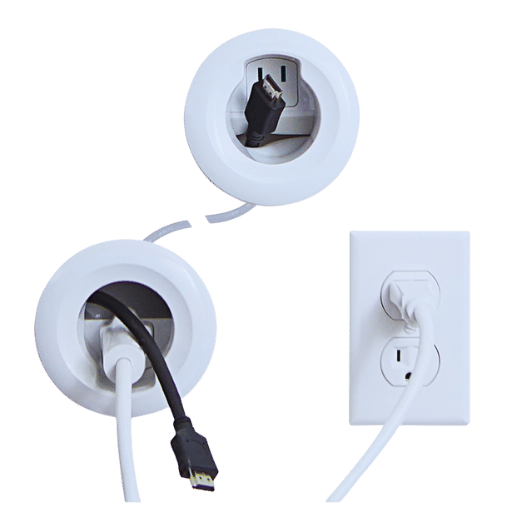
A: For desk cable management, some of the best options include cable raceways, trays, zip ties and self-adhesive cable holders. These products help to bundle, conceal, and organize wires in your workspace. Believe us, using these solutions will dramatically improve the look and functionality of your desk.
A: When it comes to making a choice, it will be determined by your desk setup situation as well as what your personal preference is. Horizontal cable managers are used to organize cables along the back part of your desk while vertical ones are great for routing cables from the floor to your desk. Whatever type of cable management you pick, think about your workspace structure first.
A: Certainly there are, some options that are perfect for height-adjustable desks. Spiral wire wraps, adjustable clips, and expandable cable sleeves are the best examples of solutions that provide flexibility while still keeping the wires organized. Your wires remain neat, regardless of whether or not your desk height has changed.
A: Zip ties are excellent tools for managing cables. You can use zip ties to bundle cables and organize them under your desk or around the legs of the table. To enhance the aesthetics, consider using reusable zip ties or Velcro straps, which are easily adjustable. While doing so, don’t forget to keep some slack in the cables so the connectors are not put under undue stress.
A: A cable raceway has numerous benefits when it comes to dealing with desk cables. It ensures that a professional look is met by concealing multiple wires within a single channel. Raceways are easy to mount below your desk or horizontally along walls, and most have self-adhesive tape on the back for instant mounting. They also keep the cables organized and within reach while protecting them from dust and damage.
A: In the case of multiple devices, start with using a desk cable management tray to capture the cables under your desk. Employ cable holders or clips to fix individual cords in place. Route cables from devices to power using a cable duct or raceway. Label the cables for easy identification of which cord belongs to which device, especially when using a desk cable management idea.
A: There is a myriad of budget-friendly ideas that you can try. Use binder clips at the edge of your desk to secure cables. If you have used toilet paper rolls or paper towel tubes, they can be repurposed to bundle cables. A cardboard concealer decorated with paper can be created by you. Even basic twist ties are quite useful in cable management.
A: For any first-time users intending to manage cables, it would be best to first understand what features they need. The ergonomic fit, the amount of desk space, and the existing cables are a few things to keep in mind. Strike a balance between firmness and flexibility when choosing cable management products. Most comprehensive office furniture suppliers should be able to provide a set of cable management products regardless of your budget, meaning it shouldn’t be an issue for anyone.
1. Creation of Cable Operator Management System
Summary:
Key Findings:
2. Network Design: Suggested Solutions to the Cable Management Issue
Summary:
Key Findings:
3. Working Out the Kinks: Creating Solutions to Assist Health Care Workers to Take Vital Signs Through Effective Cable Management
Summary:
Key Findings:
5. Cable tie